Word embedding - Class review
Last updated on:7 months ago
We use word embedding to feature representation. The contents of the blog are a note rearranging of course Sequence Model.
Introduction
Learn high dimensional feature vectors that give a better across different words

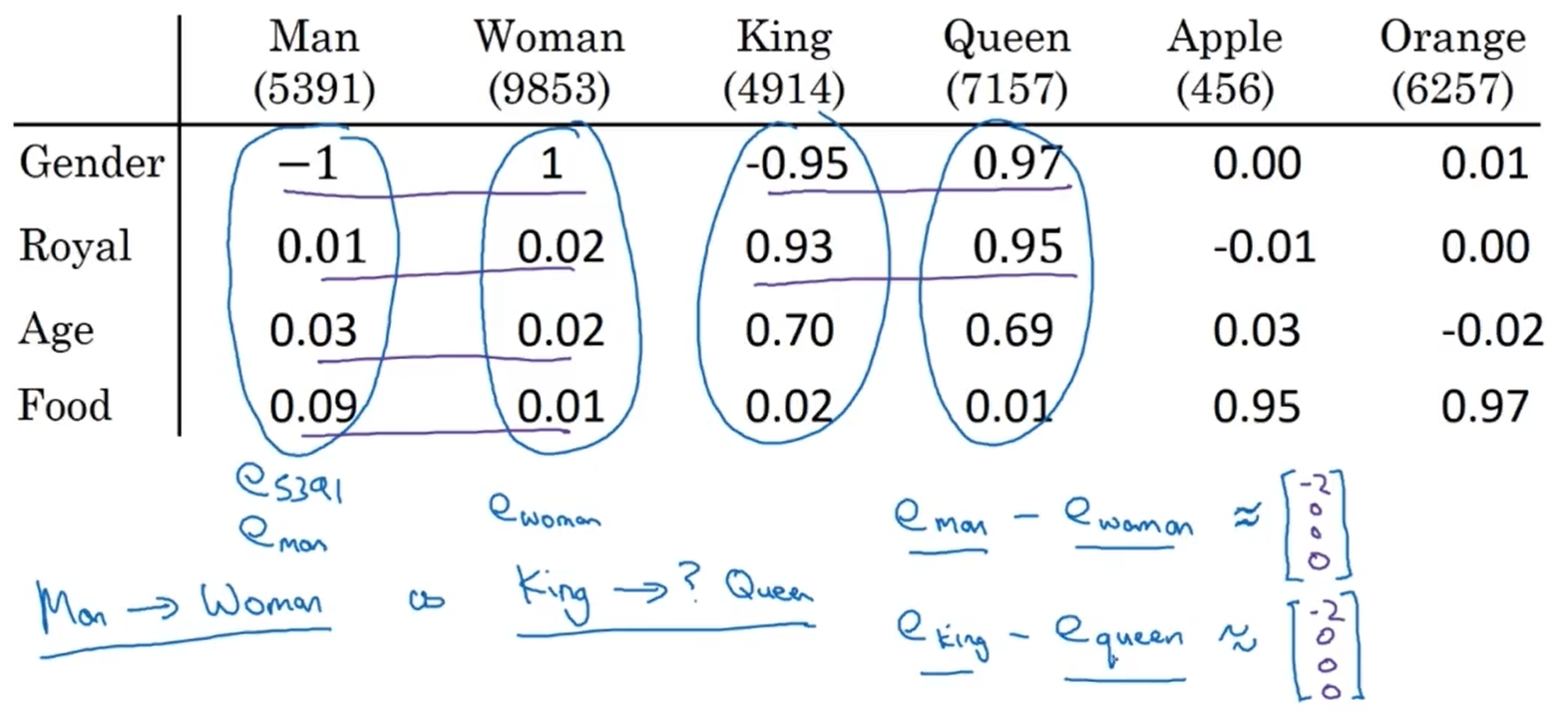
Suppose you learn a word embedding for a vocabulary of 10000 words. The dimension of word vectors is usually smaller than the vocabulary size. The most common sizes for word vectors range between 50 and 1000.
t-SNE visualisation
t-SNE can be used to map similar feature vectors. It is a non-linear dimensionality reduction technique.

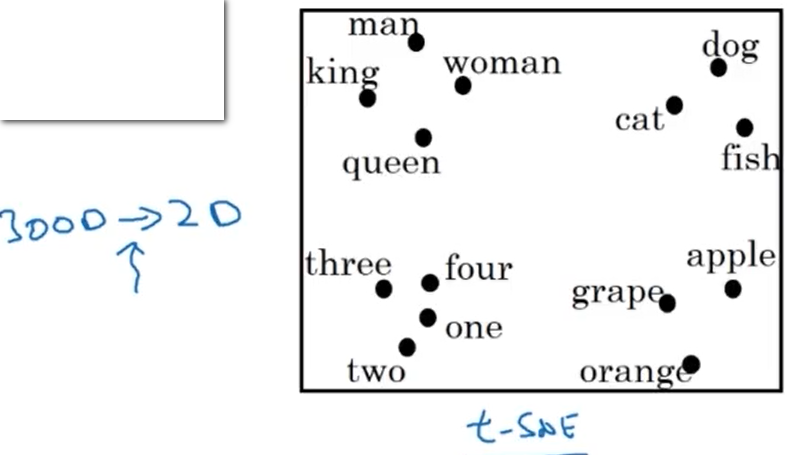
Implementation
Use scikit-learn. See PyTorch-tSNE for instructions.
TSNE cuda is not working due to difficult deployment (no win11) and strict running environment (>100 G memory). Most importantly, no running error show during debugging. Aborted (core dumped).
conda install tsnecuda -c conda-forgeDistance
Cosine similarity is a good way to compare the similarity between pairs of word vectors. Note that L2 (Euclidean) distance also works. Using a pre-trained set of word vectors for NLP applications is often a great way to get started.

Cosine similarity
$sim(u,v) = \frac{u ^ T _ v}{||u||_2 ||v||_2}$
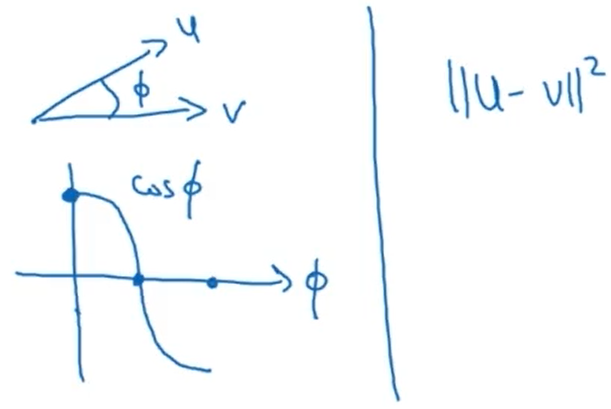
Question:
Which of these equations do you think should hold for a good word embedding? (Check all that apply)
$e _ {man} - e_{woman} \approx e _{queen} - e _{king}$
$e _ {man} - e_{king} \approx e _ {queen} - e _ {woman}$
-[x] $e _ {man} - e_ {king} \approx e _{woman} - e _{queen}$
-[x] $e _ {man} - e_ {woman} \approx e _ {king} - e_ {queen}$
Embedding matrix
We pick a given word and try to predict its surrounding words or vice versa.
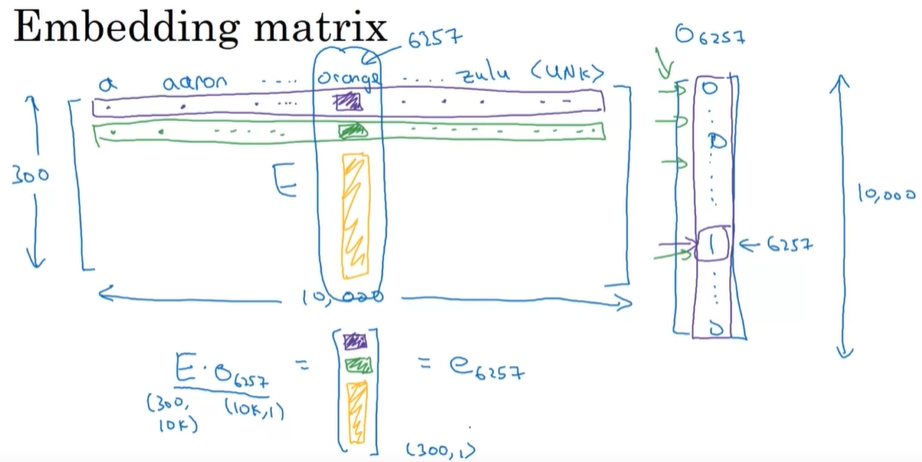
From 300 x 10000 to 300 for each (also 300 x 10000).

Another context/word pairs
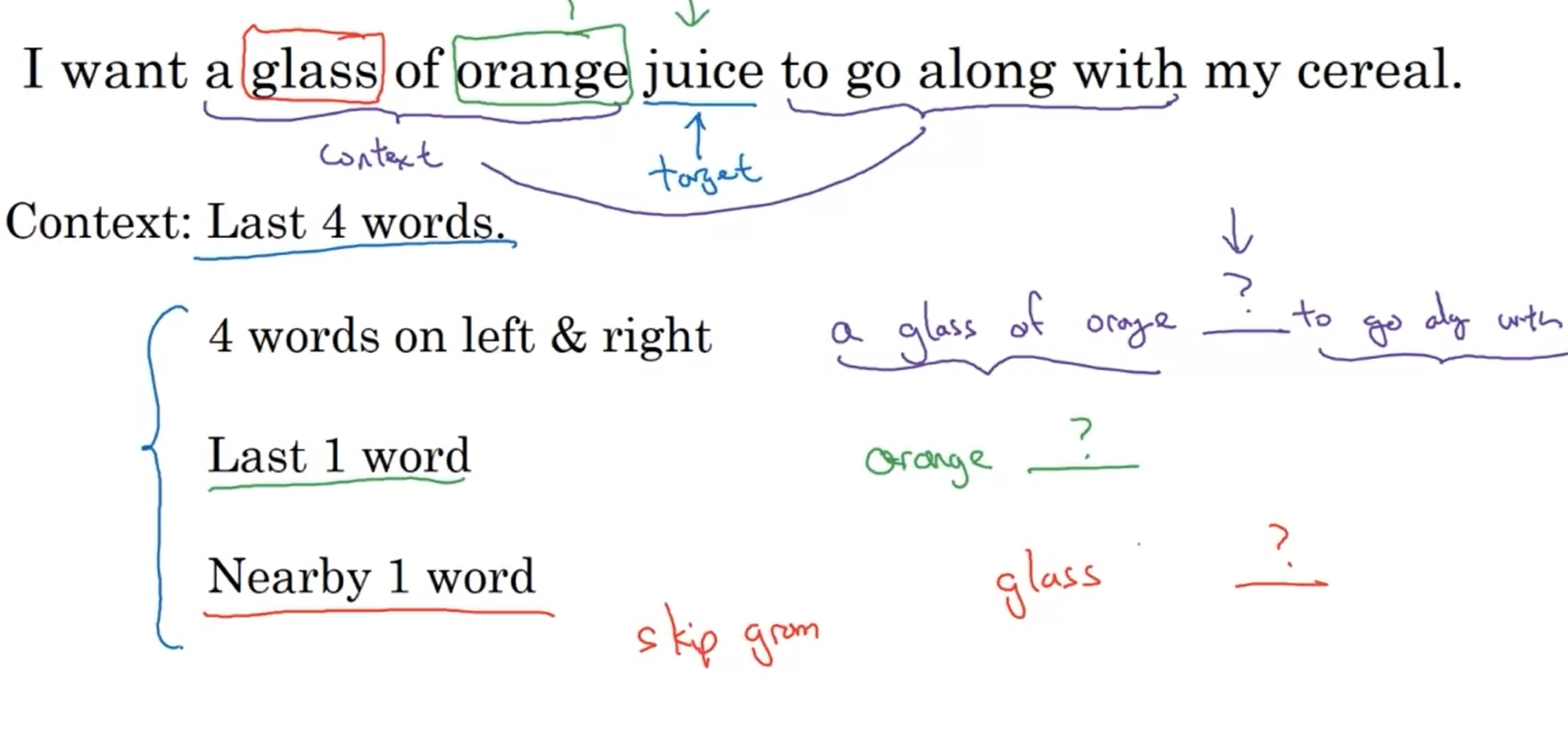
When learning word embeddings, we create an artificial task of estimating $P(\text{target}\mid \text{mid context})$. It is okay if we do poorly on this artificial prediction task; the more important by-product of this task is that we learn a useful set of word embeddings.
$t$ and $c$ are chosen from the training set as nearby words.
Word2Vec
One-hot vectors don’t do an excellent job of capturing the level of similarity between words. Every one-hot vector has the same Euclidean distance as any other one-hot vector.
Vocab size $= 10,000$.
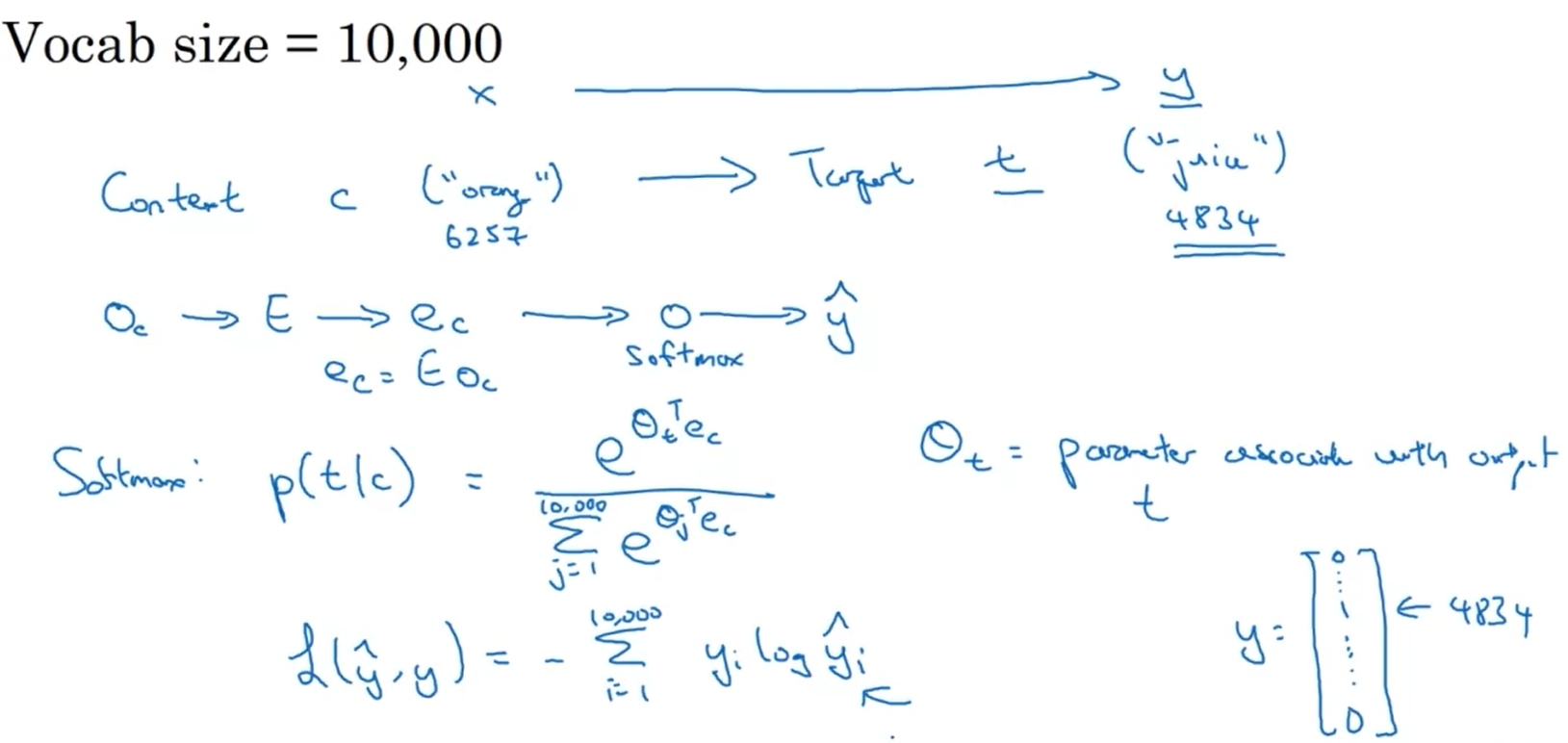
SoftMax classification consumes high computational costs.
Use hierarchical SoftMax.
$$p(t\mid c) = \frac{e^{\theta _ t ^ T e_c}}{\sum ^ {10,000} _ {j=1} e ^ {\theta _ j ^ T e_c}}$$
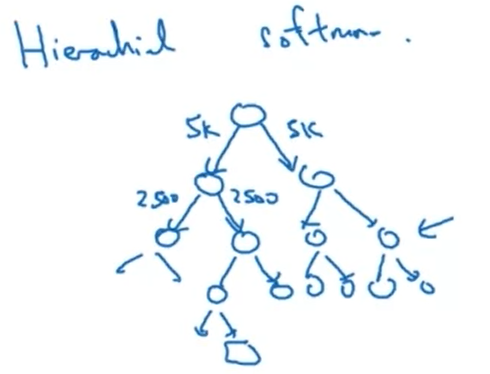
Balance something from the common words together with the less common ones (e.g., the, of, a, and, to).
Question:
Suppose you have a 10000 word vocabulary, and are learning 500-dimensional word embeddings. The word2vec model uses the following softmax function:
$$P(t \mid c) = \frac{e ^ {\theta _ t ^ T e _ c}}{\sum _ {t^{‘} = 1}^{10000} e ^ {\theta _ {t^{‘}} ^ T e _ c}}$$
Which of these statements are correct? Check all that apply.
-[x] $\theta_t$ and $e_c$ are both 500 dimensional vectors.
-[x] $\theta_t$ and $e_c$ are both trained with an optimization algorithm such as Adam or gradient descent.
$\theta_t$ and $e_c$ are both 10000 dimensional vectors.
After training, we expect $\theta_t$ to be very close to $e_c$ when $t$ and $c$ are the same word.
GloVe word vectors
Embedding vectors, such as GloVe vectors, provide much more helpful information about the meaning of individual words.
Minimize the difference between:

$\theta_i, e_j$ are symmetric. The featurization view of word embeddings.
Question:
Let $A$ be an embedding matrix, and let $o _ {4567}$ be a one-hot vector corresponding to word 4567. Then to get the embedding of word 4567, why don’t we call $A * o _ {4567}$ in Python?
The correct formula is $A^T * o_{4567}$.
-[ ] This doesn’t handle unknown words (
None of the answers is correct: calling the Python snippet described above is fine.
-[x] It is computationally wasteful.
Suppose the unknown token is added to the vocabulary, and the vocabulary list is passed as an input to the embedding layer. In that case the element-wise operation is valid even for the unknown token.
Suppose you have a 10000 word vocabulary, and are learning 500-dimensional word embeddings. The GloVe model minimizes this objective:
$$\min \sum _ {i=1}^{10,000} \sum _ {j=1}^{10,000} f(X _ {ij}) (\theta _ i ^ T e_j + b_i + b_j^{‘} - \text{log} X_{ij})^2$$
Which of these statements are correct? Check all that apply.
-[x] $X_{ij}$ s the number of times word $j$ appears in the context of word $i$.
-[x] $\theta_i$ and $e_j$ should be initialized to 0 at the beginning of training.
$\theta_i$ and $e_j$ should be initialized randomly at the beginning of training.
-[x] Theoretically, the weighting function $f(.)$ must satisfy $f(0) = 0$.
Debiasing
Word embeddings can reflect gender, ethnicity, age, sexual orientation, and other biases of the text used to train the model.
The problem of bias in word embeddings:
Word embeddings can reflect gender, ethnicity, age, sexual orientation, and other biases of the text used to train the model.
Addressing bias in word embeddings
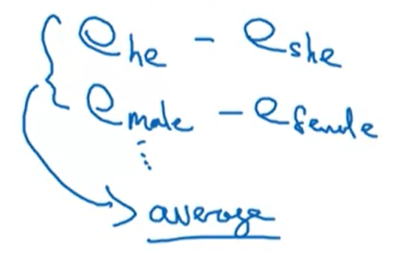
- Identify bias direction
- Neutralise: for every word that is not definitional, be projected to get rid of bias
- Equalise pairs
Highlight
- If you have an NLP task where the training set is small, using word embeddings can help your algorithm significantly.
- Word embeddings allow your model to work on words in the test set that may not even appear in the training set.
- Training sequence models in Keras (and in most other deep learning frameworks) require a few essential details:
- To use mini-batches, the sequences need to be padded so that all the examples in a mini-batch have the same length.
- An Embedding() layer can be initialised with pretrained values.
- These values can be either fixed or trained further on your dataset.
- If, however, your labelled dataset is small, it’s usually not worth trying to train a sizeable pre-trained set of embeddings.
- LSTM() has a flag called return_sequences to decide if you would like to return every hidden state or only the last one.
- You can use Dropout() right after LSTM() to regularise your network.
Reference
[1] Deeplearning.ai, Sequence model
[2] tsne-cuda
本博客所有文章除特别声明外,均采用 CC BY-SA 4.0 协议 ,转载请注明出处!